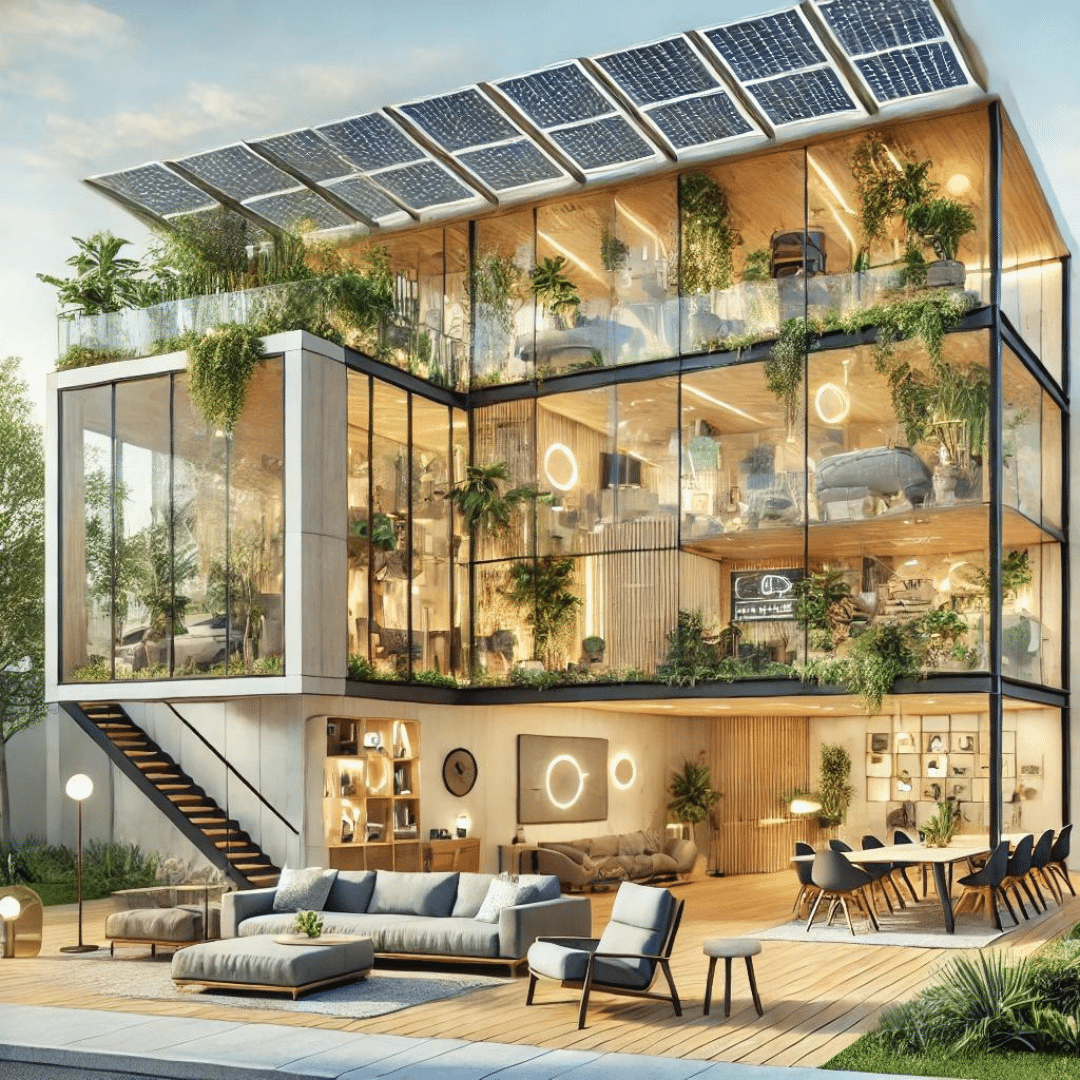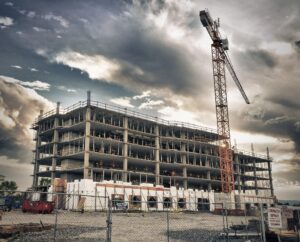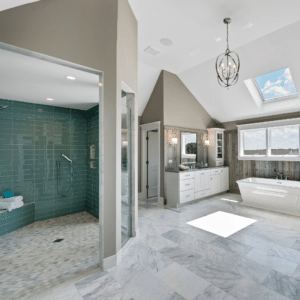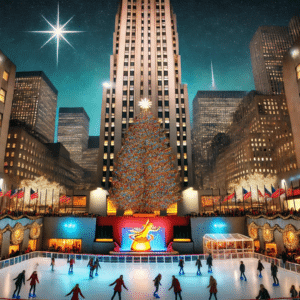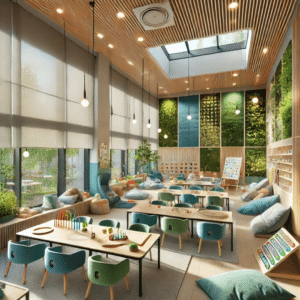Navigating the future of home design can be challenging with the constant influx of new trends and innovations. This article addresses the problem by exploring the best future home design trends, offering insights that will help you make informed decisions for your upcoming projects. Discover how cutting-edge innovations can shape modern living.
The best future home design trends include sustainable materials, smart home technology, multifunctional spaces, biophilic design, and adaptive reuse of structures. These trends prioritize environmental impact, technological integration, flexibility in living spaces, a connection to nature, and creative repurposing of existing buildings.
- Sustainable Materials: Building a Greener Future
- Smart Home Technology: The Future is Now
- Multifunctional Spaces: Maximizing Every Inch
- Biophilic Design: Bringing Nature Indoors
- Adaptive Reuse of Structures: Creative Repurposing
- Future Home Design Trends: What to Watch For
- Embrace the Future of Home Design
Key Takeaways:
- Using sustainable materials like bamboo and reclaimed wood not only reduces environmental impact but also enhances durability and aesthetic appeal.
- Integrating smart home technology, such as IoT devices and automated systems, improves convenience, energy efficiency, and security in modern living spaces.
- Designing multifunctional spaces with convertible furniture maximizes the utility of limited areas, making homes more adaptable and versatile.
- Incorporating natural elements through biophilic design enhances indoor environments, promoting health, well-being, and a connection to nature.
- Adaptive reuse of existing structures offers sustainable and unique design solutions, preserving heritage while reducing the need for new construction.
- Staying informed about emerging trends like modular construction and zero-energy homes ensures that developments remain competitive and forward-thinking.
To explore these trends in more detail and understand how they can transform your projects, keep reading. You’ll gain valuable insights into implementing these innovative ideas effectively.
Sustainable Materials: Building a Greener Future
Sustainable materials are at the forefront of future home design trends, reflecting a growing commitment to environmental stewardship. Using materials like bamboo, reclaimed wood, and recycled metal can significantly reduce the carbon footprint of new constructions. For instance, bamboo grows quickly and can be harvested sustainably, making it an excellent alternative to traditional hardwoods. Reclaimed wood not only adds character and history to a project but also minimizes the demand for new lumber. Recycled metals, such as steel and aluminum, are increasingly used in construction due to their durability and eco-friendliness.
The benefits of incorporating sustainable materials are manifold. They contribute to long-term environmental impact, lower the energy consumption required for production, and often offer superior durability. According to a report by the U.S Green Building Council, green building materials can reduce building operation costs by up to 10%, making them a cost-effective choice in the long run. Embracing these materials can position your projects as forward-thinking and environmentally responsible, attracting clients who prioritize sustainability.
Smart Home Technology: The Future is Now
Smart home technology is rapidly transforming our living spaces, making it a crucial component of future home design trends. Innovations such as the Internet of Things (IoT), automated systems, and advanced security features are now integral to modern homes. IoT devices, including smart thermostats, lighting systems, and security cameras, allow homeowners to control their environment remotely, enhancing convenience and efficiency.
Automated systems improve energy management, reducing costs and environmental impact. For example, Advanced security systems offer peace of mind with real-time monitoring and alerts, integrating seamlessly with other smart devices in the home. With AI advancements, smart home automation will become even more robust. According to a 2020 market research report, the global smart home market is expected to reach $135.3 billion by 2025, indicating growing demand. By integrating smart home technology, developers can create highly desirable properties that cater to the growing demand for connected living. This trend not only meets the needs of tech-savvy consumers but also adds significant value to the properties.
Multifunctional Spaces: Maximizing Every Inch
The trend towards multifunctional spaces is reshaping the way we think about home design. With increasing urbanization and smaller living areas, maximizing space has become essential. Multifunctional spaces are designed to serve multiple purposes, making homes more versatile and adaptable to changing needs.
Examples of multifunctional design include home offices that can double as guest rooms, kitchens with integrated dining areas, and living rooms that transform into entertainment hubs. Convertible furniture, such as fold-out desks and sofa beds, plays a crucial role in these designs, offering flexibility without compromising on comfort or style.
The advantages of multifunctional spaces are clear. They allow homeowners to make the most of their available space, enhance the functionality of their homes, and accommodate various activities seamlessly. For property developers, this trend offers an opportunity to create innovative and highly marketable living environments that appeal to a wide range of buyers, aligning with future home design trends.
Biophilic Design: Bringing Nature Indoors
Biophilic design is an emerging trend that integrates natural elements into indoor spaces, enhancing the connection between people and nature. This philosophy, part of future home design trends, aims to improve health and well-being. Key components include indoor gardens, abundant natural light, water features, and natural materials. Large windows and skylights reduce the need for artificial lighting, creating uplifting atmospheres, while indoor gardens improve air quality and provide calming effects. The Human Spaces research report on the Global Impact of Biophilic Design in the Interface Workplace showed that productivity and creativity levels increased by 6% and 15%. By embracing biophilic design, developers can create healthier and more attractive environments that cater to the growing demand for wellness-focused living.
Adaptive Reuse of Structures: Creative Repurposing
Adaptive reuse involves repurposing existing buildings for new uses, a growing trend in future home design trends. This sustainable and cost-effective approach preserves historical and cultural heritage while reducing the environmental impact of new construction. Successful examples include converting old factories into modern lofts, transforming warehouses into vibrant office spaces, and repurposing old buildings into unique homes or community services. Adaptive reuse requires fewer resources and less energy than new construction, making it environmentally friendly. Additionally, repurposing existing structures adds character and uniqueness to developments, appealing to buyers seeking distinctive properties. For developers, adaptive reuse offers an opportunity to revitalize urban areas and create valuable, one-of-a-kind spaces.
Future Home Design Trends: What to Watch For
Staying ahead of future home design trends is essential for success in the competitive real estate market. As we look to the future, several emerging trends are poised to shape the industry further:
- Modular Construction: Involves building homes in sections off-site and assembling them on-site, offering significant time and cost savings.
- Zero-Energy Homes: Designed to produce as much energy as they consume, utilizing advanced insulation, solar panels, and energy-efficient appliances.
- Advanced Materials like Graphene: A super-strong and lightweight material, holds the potential to create more durable and sustainable building components.
- AI Integration: Artificial Intelligence can optimize building designs, enhance energy efficiency, and provide predictive maintenance, ensuring homes are smarter and more responsive to their occupants’ needs.
By staying informed about these trends and incorporating them into your projects, you can ensure that your developments remain at the cutting edge of the industry. Embracing these innovations can set your properties apart, attracting clients who value forward-thinking design and sustainability.
Embrace the Future of Home Design
Incorporating the best future home design trends into your projects not only sets you apart in a competitive market but also addresses the evolving needs and preferences of modern homeowners. From sustainable materials and smart home technology to multifunctional spaces, biophilic design, and adaptive reuse of structures, these trends offer innovative solutions that enhance both functionality and aesthetics. By staying informed and adopting these trends, you can create high-quality, forward-thinking properties that resonate with today’s discerning buyers.
Ready to take your developments to the next level? Contact Guzzo Architect today at 201-939-1446 to discuss how we can help you implement these cutting-edge trends in your projects. Our team of experienced professionals is committed to delivering innovative designs that meet your specific needs and goals.
What are some innovative energy-efficient features to consider in future home designs?
Innovative energy-efficient features include solar panels, energy-efficient windows, insulated concrete forms, geothermal heating and cooling, and LED lighting. These features reduce energy consumption, lower utility bills, and promote sustainability, making homes more attractive to eco-conscious buyers.
How can future home design trends impact tenant satisfaction in commercial properties?
Incorporating future home design trends, such as smart technology, multifunctional spaces, and biophilic design, can enhance tenant satisfaction by improving convenience, comfort, and well-being. These trends create more efficient, adaptable, and aesthetically pleasing environments that cater to the diverse needs of tenants.
What are some challenges in implementing future home design trends?
Challenges include higher initial costs, technical expertise requirements, regulatory compliance, market acceptance, and maintenance needs. Despite these hurdles, the long-term benefits of sustainable and innovative designs often outweigh the difficulties, resulting in more valuable and appealing properties.

